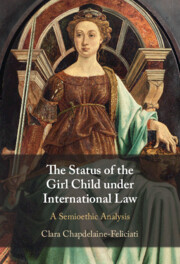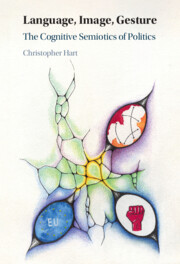Refine search
Actions for selected content:
80 results
Chapter 3 - The Modalities of the Four Conformation System
- from Part I - Modes of Minding Social Action: Bodily Indices of Unity, Dimensional Icons of Rank, Concrete Matching Operations of Equality, Arbitrary Symbols of Proportions
-
- Book:
- Representing Relationships
- Published online:
- 21 November 2025
- Print publication:
- 11 December 2025, pp 76-92
-
- Chapter
- Export citation

Representing Relationships
- Modes of Cognition and Connection
-
- Published online:
- 21 November 2025
- Print publication:
- 11 December 2025
1 - Fashion, Post-postmodernism and Intellectual Property
- from Part I - Theoretical Frameworks
-
-
- Book:
- Fashion and Intellectual Property
- Published online:
- 27 October 2025
- Print publication:
- 13 November 2025, pp 3-48
-
- Chapter
-
- You have access
- Open access
- HTML
- Export citation
8 - Communication in the Rest of the Animal Kingdom
- from Part IV - Animal Communication
-
- Book:
- Genes, Brains, Evolution and Language
- Published online:
- 13 November 2025
- Print publication:
- 13 November 2025, pp 289-333
-
- Chapter
- Export citation
Chapter 1 - Kant on Language
- from Part I - Linguistic Implications of Kant’s Thought
-
-
- Book:
- Kant on Language
- Published online:
- 19 September 2025
- Print publication:
- 09 October 2025, pp 9-26
-
- Chapter
- Export citation
Chapter 8 - Meaning-making with children: Semiotics, learning and communicating
-
-
- Book:
- The Arts and Meaning-Making with Children
- Published online:
- 11 September 2025
- Print publication:
- 25 September 2025, pp 163-187
-
- Chapter
- Export citation
Examining the role of semiotics in social media-driven information campaigns
-
- Journal:
- Data & Policy / Volume 7 / 2025
- Published online by Cambridge University Press:
- 22 August 2025, e58
-
- Article
-
- You have access
- Open access
- HTML
- Export citation

Healing and the Invention of Metaphor
- Toward a Poetics of Illness Experience
-
- Published online:
- 17 July 2025
- Print publication:
- 31 July 2025
2 - Clothing, Identity, and Communication
-
- Book:
- A Philosopher Looks at Clothes
- Published online:
- 08 May 2025
- Print publication:
- 05 June 2025, pp 26-56
-
- Chapter
- Export citation
2 - Stability and Change of International Orders
- from Part I
-
- Book:
- Representants and International Orders
- Published online:
- 15 May 2025
- Print publication:
- 08 May 2025, pp 26-64
-
- Chapter
- Export citation

The Status of the Girl Child under International Law
- A Semioethic Analysis
-
- Published online:
- 06 March 2025
- Print publication:
- 13 March 2025
1 - Introduction
-
- Book:
- Language, Image, Gesture
- Published online:
- 08 January 2025
- Print publication:
- 13 February 2025, pp 1-27
-
- Chapter
- Export citation
Chapter 3 - Communication as a process
- from Part 1 - Understanding communication
-
- Book:
- Communication Skills for Business Professionals
- Published online:
- 25 February 2025
- Print publication:
- 15 January 2025, pp 54-75
-
- Chapter
- Export citation

Language, Image, Gesture
- The Cognitive Semiotics of Politics
-
- Published online:
- 08 January 2025
- Print publication:
- 13 February 2025

Literacies of Migration
- Translanguaging Imaginaries of Innocence
-
- Published online:
- 30 November 2024
- Print publication:
- 21 November 2024
1 - Introduction
-
- Book:
- Literacies of Migration
- Published online:
- 30 November 2024
- Print publication:
- 21 November 2024, pp 1-23
-
- Chapter
- Export citation
7 - Reinscribing Lost Imaginaries of Semiolingual Innocence
-
- Book:
- Literacies of Migration
- Published online:
- 30 November 2024
- Print publication:
- 21 November 2024, pp 211-238
-
- Chapter
- Export citation
3 - Making Africa with Punic Signs
- from Part II - Themes in the Making of Hegemony
-
- Book:
- Religion and the Making of Roman Africa
- Published online:
- 24 October 2024
- Print publication:
- 07 November 2024, pp 83-114
-
- Chapter
- Export citation
1 - Colonial Traditions
- from Part I - Colonial Histories
-
- Book:
- Religion and the Making of Roman Africa
- Published online:
- 24 October 2024
- Print publication:
- 07 November 2024, pp 3-26
-
- Chapter
- Export citation
Style on Trial: The Gendered Aesthetics of Appearance, Corruption, and Piety in Indonesia
-
- Journal:
- Comparative Studies in Society and History / Volume 66 / Issue 4 / October 2024
- Published online by Cambridge University Press:
- 25 October 2024, pp. 814-844
-
- Article
-
- You have access
- Open access
- HTML
- Export citation
